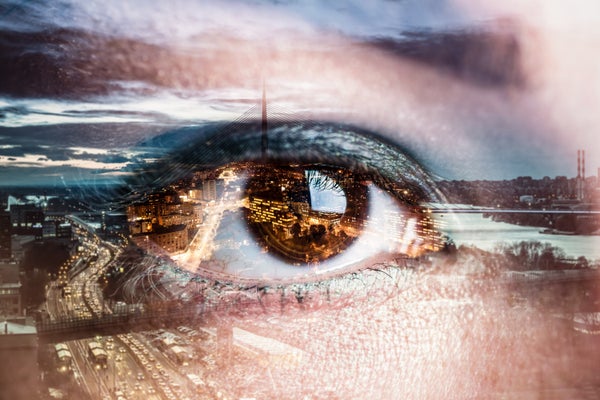Five-year-olds invent imaginary friends, teenagers visualize what an amorous crush would be like, and adults plan for job achievements, buying a house or traveling the world. Imagination is a trait that we all possess and use in our daily lives. But if we try to think of situations that are too far from our reality in time or space—perhaps the world in 2500 or what it would be like to live on the moon or Mars—we often have a hard time visualizing those scenarios.
For decades, neuroscientists and psychologists have tried to understand what exactly goes on in the brain when we turn our imaginations loose and what limits the ability of many of us to envision distant scenarios. In a study published in April in the Journal of Personality and Social Psychology, researchers report that creative professionals seem to be better than others at surmounting the mental barriers to accessing distal imagination, and their ability may be explained, in part, by their tapping into a brain network that only they can access.
By using the dorsomedial part of what scientists refer to as the brain’s “default network,” creative people can stretch their imagination to more distant futures, places, perspectives and hypothetical realities. The default network consists of a group of interconnected brain regions, including the medial prefrontal cortex, the posterior cingulate cortex, the angular gyrus and the hippocampus. These brain areas talk to each other when we daydream, recall memories or think about the intentions of others. Previous literature suggests that they may also play a role in envisioning the future.
On supporting science journalism
If you're enjoying this article, consider supporting our award-winning journalism by subscribing. By purchasing a subscription you are helping to ensure the future of impactful stories about the discoveries and ideas shaping our world today.
Scientists believe that some of these default network circuits may help us draw from our experiences when we imagine situations that are close to us in time and space. For example, we may think of the sights and smells of a coffee shop we’ve frequented in the past when contemplating a new place in town to patronize next week—or next year. Creative professionals, though, engage other default network subsystems when imagining more distant scenarios that can’t be reconstructed by mixing and matching different memories that come to mind. Take the example of a fiction writer. “They’re imagining somebody else’s point of view in a landscape that’s not [the writer’s] direct reality,” says lead author Meghan Meyer, an assistant professor of psychological and brain science at Dartmouth College.
To uncover how creative professionals so vividly picture distant or hypothetical realities, Meyer and her colleagues performed a series of three experiments. First, they asked 300 randomly selected study participants to envision what the planet would be like in 500 years or a world in which the continents had never divided or a life lived as an angry dictator. Participants were also asked to think of as many ways as possible to use a pen or to improve a megaphone. Those who scored high on creativity were rated as better at using distal imagination.
Next, the researchers repeated these tests with 100 participants who had demonstrated some sort of expertise in creativity—writers, actors, directors and visual artists, who had received awards in their fields. They also asked a group of equally successful finance, legal and medical professionals the same questions. The creative professionals outperformed others in written responses and in self-reports of how vividly they could picture the situations in their minds.
Meyer and her team wondered whether the creative professionals simply had stronger “imagination muscles,” the way professional baseball players have more robust throwing arms compared to nonathletes. To see these imagination muscles in action, they asked 27 creative types and 26 control participants to go through simulation tasks while lying in a functional magnetic resonance imaging (fMRI) scanner. Brain activity of the creative adepts and controls was similar when imagining the next 24 hours but to the researchers’ surprise, the creative group alone engaged the dorsomedial default network when imagining events further into the future.
The dorsomedial default network was not active at all among the control group. Yet, this network was switched on even when creative professionals were at rest. “This is a big step forward in understanding the creative brain,” says Roger Beaty, a psychology researcher at Penn State University, who was not involved in the study. “The findings provide insight into how the brain is able to imagine different situations and what makes creative experts exceptional at imagining distant ones,” he says.
The results also have implications for the way we consider other people. Because the dorsomedial default network is involved in thinking about perspectives that differ significantly from our own experiences, people who are able to activate this network may be better able to empathize with others or imagine how public policies may impact future generations, says Daniel Schacter, a Harvard psychologist who was not involved in the study.
The next big question is whether activation of the dorsomedial default network can be improved with training, Schacter says. If it is a malleable ability, maybe taking drawing classes or the like will boost our imagination and help us all better connect with others.
